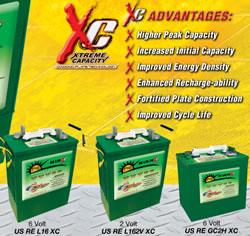Solar installations today go beyond merely harnessing energy; they now incorporate advanced technologies like mobile app connectivity and bidirectional energy flow, improving efficiency, transparency, and grid stability.
 REUSE
REUSE

Prachit Kurani
The renewable energy sector has experienced a transformative shift by integrating smart technology, significantly enhancing solar energy generation, electricity storage, and grid compliance. Solar installations today go beyond merely harnessing energy; they now incorporate advanced technologies like mobile app connectivity and bidirectional energy flow, improving efficiency, transparency, and grid stability.
Modern solar energy systems are equipped with smart inverters and monitoring software that allow homeowners and businesses to track energy generation and consumption in real time. By connecting to mobile apps, users can monitor electricity usage, battery charge levels, and energy flow between solar panels, storage units, and the grid. This level of transparency empowers users to optimize energy consumption patterns, ultimately reducing waste and lowering electricity costs.
Beyond usage monitoring, these apps can also send alerts about system maintenance needs, ensuring optimal panel performance. Rigorous testing frameworks for such mobile platforms help ensure these monitoring tools meet compliance standards and user expectations.
Electricity storage plays a vital role in maximizing the efficiency of solar energy. Advanced battery systems, such as lithium-ion and solid-state batteries, enable surplus solar power to be stored for use during peak demand or nighttime hours. These efficient storage solutions reduce dependence on the grid and serve as a reliable backup during power outages.
Storage is especially beneficial in colder regions with limited sunlight, such as Missouri or New York, compared to sunnier states like Hawaii or Texas. Additionally, stored solar energy can power electric vehicles, reducing the need to draw electricity from the grid and further enhancing sustainability.
Grid Compliance and Energy Flow Management
Grid compliance is critical in successfully integrating solar energy systems, ensuring they operate safely, efficiently, and in harmony with existing power infrastructure. Renewable energy installations must meet national and regional standards to maintain grid stability, protect equipment, and safeguard public safety.
Key compliance considerations include:
- Voltage Regulation: Solar systems must maintain stable voltage levels to prevent fluctuations that could destabilize the grid. Overvoltage or undervoltage issues can damage grid components and affect the reliability of power delivery.
- Power Factor Correction: Solar inverters play a crucial role in managing power factor, ensuring efficient energy transfer with minimal losses. A balanced power factor helps reduce strain on the grid and improves overall energy efficiency.
- Frequency Control: Maintaining grid frequency within acceptable ranges is essential for preventing disruptions. Solar systems must be capable of adjusting output in response to frequency variations, ensuring grid reliability.
- Harmonic Distortion Management: Solar installations must minimize harmonic distortions, which can interfere with other electrical devices and degrade grid performance. Advanced inverter technologies help mitigate these effects.
- Safety Standards: Compliance with safety protocols, such as anti-islanding protection, ensures solar systems automatically disconnect during grid outages. This prevents power surges and back-feeding risks, protecting both utility workers and homeowners.
Modern solar systems support bidirectional energy flow, a key feature that enhances both efficiency and financial benefits. Through net metering, excess electricity generated by a solar system can be returned to the grid, allowing homeowners to receive credits on their utility bills. This exchange reduces electricity costs and supports grid stability by supplying clean energy during peak demand.
Beyond individual financial benefits, bidirectional energy flow promotes broader renewable energy adoption. Enabling decentralized energy generation reduces the demand for centralized power plants and lowers carbon emissions. Additionally, communities with widespread solar adoption can collectively contribute to a more resilient and sustainable energy grid.
Advanced energy management technologies, such as smart inverters and battery storage systems, optimize energy flow by balancing consumption and generation in real-time. These innovations empower homeowners to maximize energy independence while ensuring compliance with evolving grid standards.
Quality Assurance and Electric Vehicle Integration
Quality assurance is pivotal in the renewable energy sector, ensuring the reliability, safety, and efficiency of solar installations and energy management platforms. As clean energy technologies become more interconnected, rigorous testing and process optimization are essential to guarantee consistent performance across all components. Effective quality assurance practices focus on:
- Data Accuracy and Real-Time Monitoring: Mobile applications used for energy management must provide precise data visualization and real-time monitoring of energy generation, consumption, and storage. Regular validation ensures data integrity, empowering users to make informed decisions.
- Battery Safety and Performance: Electricity storage systems, such as solar batteries, undergo comprehensive testing for safety, capacity, and longevity. This includes stress testing for thermal stability, charge retention, and degradation under various operating conditions to ensure consistent performance.
- Grid Compliance and Stability: Solar systems must meet grid compliance standards to prevent disruptions in energy flow. Quality assurance includes verifying voltage regulation, frequency control, and anti-islanding protection, ensuring smooth integration with the power grid.
- EV Charging Security and Efficiency: Electric vehicle (EV) charging systems are tested for secure payment processing, accurate energy metering, and operational efficiency. This ensures that charging stations are functional, safe for consumers, and compliant with energy standards.
The Convergence of Solar Energy and Electric Vehicle Integration
The increasing synergy between solar energy systems and EV charging infrastructure offers a powerful step toward greater sustainability and energy independence. Solar-powered EV chargers provide an eco-friendly solution by allowing vehicles to be charged directly from renewable energy sources, significantly reducing carbon emissions and energy costs.
Advanced solar-integrated EV charging systems offer enhanced capabilities, including:
- Smart Charging Optimization: Integrated platforms can schedule charging sessions during peak solar generation hours, maximizing the use of clean energy and reducing reliance on the grid.
- Mobile App Integration: Modern EV chargers can be paired with mobile apps, enabling users to monitor energy consumption, battery status, and charging schedules directly from their smartphones. On the other hand, customers can monitor their electricity consumption, battery status, and charging schedules. The app also provides insights on whether additional microinverters (MIs) or panels are needed to meet their energy demands effectively.
- Payment Security: Secure digital payment gateways are critical for public solar-powered EV charging networks. Quality assurance ensures these systems are tested for encryption protocols, fraud prevention, and transaction reliability.
- Load Balancing and Energy Flow Management: To prevent grid strain, advanced systems can balance energy distribution between solar generation, battery storage, and EV charging needs, optimizing overall efficiency.
Manufacturers and service providers can deliver safe, efficient, and user-friendly solutions that drive the transition toward a cleaner, more sustainable energy ecosystem by ensuring rigorous quality assurance across both solar energy and EV infrastructure.
As solar energy continues to evolve, integrating smart technologies like mobile app connectivity, electricity storage, and grid feedback mechanisms will play a pivotal role in expanding renewable energy adoption. The renewable energy sector can advance toward a more efficient and sustainable future by emphasizing process optimization and quality assurance.
The content & opinions in this article are the author’s and do not necessarily represent the views of AltEnergyMag
Comments (0)
This post does not have any comments. Be the first to leave a comment below.
Featured Product

